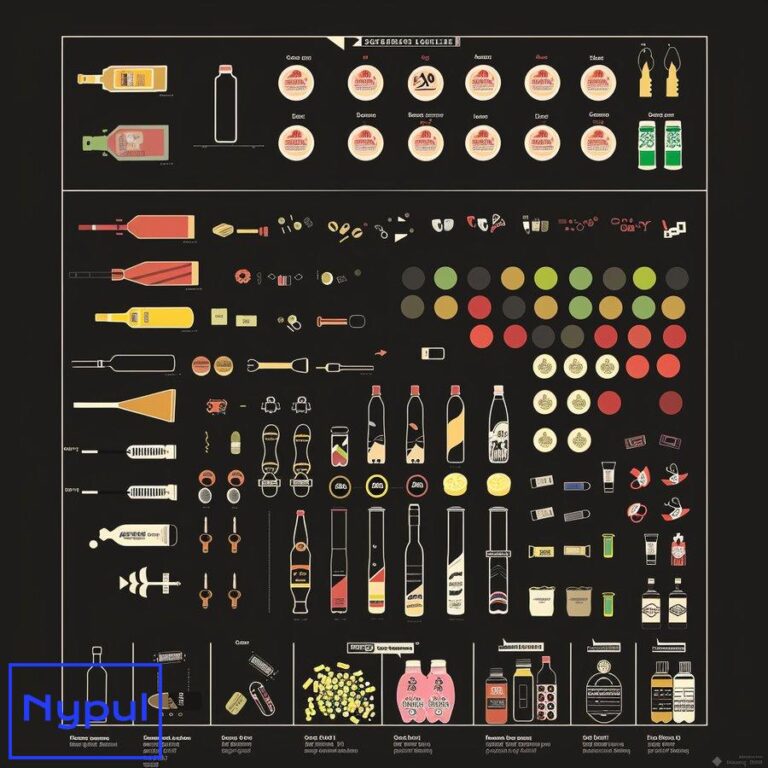What Are the KPIs for Delivery Efficiency
What are Delivery Efficiency KPIs and Why Do They Matter?
Delivery efficiency key performance indicators (KPIs) are quantifiable metrics that measure how effectively a business conducts its delivery operations. These KPIs provide valuable insights into various aspects of the delivery process, such as timeliness, cost-effectiveness, accuracy, customer satisfaction, and overall operational efficiency.
Tracking delivery efficiency KPIs is crucial for several reasons:
Identifying Areas for Improvement
By monitoring KPIs, businesses can pinpoint specific areas within their delivery operations that need improvement. This data-driven approach allows companies to make informed decisions and implement targeted strategies to optimize their processes.
Enhancing Customer Satisfaction
Efficient deliveries lead to higher customer satisfaction levels. By tracking KPIs related to on-time delivery rates, order accuracy, and customer feedback, businesses can ensure they consistently meet or exceed customer expectations.
Reducing Costs
Delivery efficiency KPIs help identify cost-saving opportunities. By analyzing metrics such as cost per delivery, fuel consumption, and vehicle utilization, companies can streamline their operations and reduce unnecessary expenses.
Benchmarking Performance
KPIs enable businesses to compare their delivery performance against industry standards and competitors. This benchmarking process helps companies set realistic goals, measure progress, and strive for continuous improvement.
How Do Time-Based KPIs Measure Delivery Performance?
Time-based KPIs are essential for assessing the speed and punctuality of delivery operations. These metrics focus on the timeliness of deliveries and help businesses identify bottlenecks and inefficiencies in their processes.
On-Time Delivery Rate
The on-time delivery rate measures the percentage of orders delivered within the promised timeframe. It is calculated using the following formula:
On-Time Delivery Rate (%) = (Number of On-Time Deliveries ÷ Total Number of Deliveries) × 100
A high on-time delivery rate indicates that a company consistently meets its delivery commitments, leading to increased customer satisfaction.
Average Delivery Time
Average delivery time measures the time it takes for an order to be delivered from the moment it is placed until it reaches the customer. This KPI helps businesses assess the efficiency of their delivery process and identify areas where improvements can be made.
To calculate average delivery time, use the following formula:
Average Delivery Time = Total Delivery Time ÷ Total Number of Deliveries
Transit Time
Transit time refers to the duration it takes for a shipment to travel from the origin to the destination. This KPI is particularly important for businesses that rely on third-party logistics providers or have long-distance deliveries.
Monitoring transit time helps companies identify delays, optimize routes, and select the most efficient shipping methods.
What Cost-Related Metrics Should You Track for Delivery Efficiency?
Cost-related metrics are crucial for evaluating the financial performance of delivery operations. By tracking these KPIs, businesses can identify cost-saving opportunities and optimize their resources.

Cost per Delivery
Cost per delivery measures the average expense incurred for each successful delivery. This KPI takes into account various factors such as fuel costs, labor, vehicle maintenance, and packaging materials.
To calculate cost per delivery, use the following formula:
Cost per Delivery = Total Delivery Costs ÷ Total Number of Deliveries
By monitoring cost per delivery, businesses can identify areas where they can reduce expenses and improve profitability.
Fuel Efficiency
Fuel efficiency is a critical KPI for delivery operations, as fuel costs often constitute a significant portion of overall expenses. This metric measures the average fuel consumption per delivery or per mile traveled.
To calculate fuel efficiency, use one of the following formulas:
Fuel Efficiency (per delivery) = Total Fuel Consumed ÷ Total Number of Deliveries
Fuel Efficiency (per mile) = Total Fuel Consumed ÷ Total Miles Traveled
By tracking fuel efficiency, businesses can optimize routes, reduce idling time, and invest in more fuel-efficient vehicles to minimize costs.
Vehicle Utilization Rate
Vehicle utilization rate measures how effectively a company uses its delivery fleet. This KPI helps businesses ensure that their vehicles are being used efficiently and identifies opportunities to optimize fleet size.
To calculate vehicle utilization rate, use the following formula:
Vehicle Utilization Rate (%) = (Total Hours Utilized ÷ Total Available Hours) × 100
A high vehicle utilization rate indicates that a company is making the most of its fleet, while a low rate suggests that there may be room for improvement.
How Can Quality and Accuracy KPIs Improve Delivery Operations?

Quality and accuracy KPIs focus on ensuring that deliveries meet customer expectations and are free from errors. By tracking these metrics, businesses can enhance customer satisfaction and reduce the costs associated with returns and redeliveries.
Order Accuracy Rate
Order accuracy rate measures the percentage of orders that are delivered without errors, such as incorrect items, missing products, or damaged goods. This KPI is critical for maintaining customer trust and loyalty.
To calculate order accuracy rate, use the following formula:
Order Accuracy Rate (%) = (Number of Accurate Orders ÷ Total Number of Orders) × 100
By monitoring order accuracy rate, businesses can identify sources of errors and implement quality control measures to improve performance.
Perfect Order Rate
Perfect order rate is a comprehensive KPI that measures the percentage of orders that meet all of the following criteria:
- Delivered on time
- Delivered in full (no missing items)
- Delivered without damage
- Accompanied by accurate documentation
To calculate perfect order rate, use the following formula:
Perfect Order Rate (%) = (Number of Perfect Orders ÷ Total Number of Orders) × 100
A high perfect order rate indicates that a company consistently delivers orders that meet all customer expectations, leading to increased satisfaction and loyalty.
Returns and Redelivery Rate
Returns and redelivery rate measures the percentage of orders that are returned or require redelivery due to issues such as customer dissatisfaction, incorrect addresses, or failed delivery attempts.
To calculate returns and redelivery rate, use the following formula:
Returns and Redelivery Rate (%) = (Number of Returns and Redeliveries ÷ Total Number of Orders) × 100
By tracking this KPI, businesses can identify the root causes of returns and redeliveries and implement strategies to minimize their occurrence, reducing costs and improving customer satisfaction.
What Customer Satisfaction Metrics Are Crucial for Delivery Services?
Customer satisfaction metrics provide valuable insights into how well a company’s delivery services meet customer expectations. By tracking these KPIs, businesses can identify areas for improvement and take proactive steps to enhance the customer experience.
Customer Satisfaction Score (CSAT)
The Customer Satisfaction Score (CSAT) measures how satisfied customers are with a company’s delivery services. This KPI is typically obtained through surveys that ask customers to rate their satisfaction on a scale of 1 to 5 or 1 to 10.
To calculate CSAT, use the following formula:
CSAT (%) = (Number of Positive Responses ÷ Total Number of Responses) × 100
A high CSAT indicates that customers are generally satisfied with the delivery experience, while a low score suggests that improvements are needed.
Net Promoter Score (NPS)
The Net Promoter Score (NPS) measures customer loyalty and the likelihood of customers recommending a company’s delivery services to others. This KPI is obtained through surveys that ask customers to rate their likelihood of recommending the company on a scale of 0 to 10.
To calculate NPS, use the following formula:
NPS = % of Promoters (9-10 ratings) – % of Detractors (0-6 ratings)
A high NPS indicates that a company has a large proportion of loyal customers who are likely to recommend its services, while a low score suggests that customer loyalty and advocacy need improvement.
Customer Complaint Rate
The customer complaint rate measures the percentage of orders that result in customer complaints. This KPI helps businesses identify common issues and take corrective actions to improve the delivery experience.
To calculate customer complaint rate, use the following formula:
Customer Complaint Rate (%) = (Number of Orders with Complaints ÷ Total Number of Orders) × 100
By monitoring customer complaint rate and analyzing the nature of complaints, businesses can address recurring problems and enhance customer satisfaction.
Which Operational Efficiency KPIs Optimize the Delivery Process?

Operational efficiency KPIs focus on optimizing the delivery process to maximize productivity and minimize waste. By tracking these metrics, businesses can streamline their operations and improve overall performance.
Delivery Density
Delivery density measures the number of deliveries made within a specific geographic area. This KPI helps businesses optimize route planning and reduce the time and cost associated with traveling between delivery points.
To calculate delivery density, use the following formula:
Delivery Density = Number of Deliveries ÷ Geographic Area (in square miles or kilometers)
A high delivery density indicates that a company is efficiently serving a concentrated customer base, while a low density suggests that there may be opportunities to optimize routes and reduce travel time.
Average Stops per Route
Average stops per route measures the number of delivery points a driver visits on a single trip. This KPI helps businesses assess the efficiency of their route planning and identify opportunities to optimize delivery sequences.
To calculate average stops per route, use the following formula:
Average Stops per Route = Total Number of Stops ÷ Total Number of Routes
By monitoring average stops per route and comparing it to industry benchmarks, businesses can ensure that their drivers are making the most efficient use of their time.
Vehicle Fill Rate
Vehicle fill rate measures the percentage of a vehicle’s capacity that is utilized during delivery. This KPI helps businesses optimize their fleet utilization and reduce the costs associated with underutilized vehicles.
To calculate vehicle fill rate, use the following formula:
Vehicle Fill Rate (%) = (Actual Load Volume ÷ Maximum Load Capacity) × 100
A high vehicle fill rate indicates that a company is efficiently using its fleet, while a low rate suggests that there may be opportunities to consolidate loads or optimize vehicle sizes.
How to Implement and Track Delivery Efficiency KPIs Effectively?
Implementing and tracking delivery efficiency KPIs is essential for driving continuous improvement in delivery operations. To ensure the success of a KPI program, businesses should follow these best practices:
Define Clear Objectives

Before implementing KPIs, businesses should define clear objectives that align with their overall strategic goals. This helps ensure that the chosen KPIs are relevant and meaningful to the organization.
Choose the Right KPIs
Businesses should select KPIs that are specific, measurable, achievable, relevant, and time-bound (SMART). The chosen KPIs should provide actionable insights and drive desired behaviors.
Establish a Data Collection Process
To accurately track KPIs, businesses need to establish a reliable data collection process. This may involve integrating data from various sources, such as delivery management software, GPS tracking systems, and customer feedback platforms.
Set Targets and Benchmarks
Businesses should set realistic targets for each KPI based on historical performance and industry benchmarks. These targets should be regularly reviewed and adjusted as needed to ensure continuous improvement.
Communicate and Train Employees
Employees at all levels should be aware of the KPIs being tracked and understand their role in achieving the desired outcomes. Providing regular training and communication helps ensure that everyone is working towards the same goals.
Monitor and Analyze Results
Businesses should regularly monitor and analyze KPI results to identify trends, patterns, and areas for improvement. This data-driven approach enables companies to make informed decisions and take corrective actions when needed.
Celebrate Successes and Address Challenges
Celebrating successes and recognizing employees who contribute to achieving KPI targets helps maintain motivation and engagement. At the same time, businesses should proactively address challenges and obstacles that hinder KPI performance.
What Strategies Can Improve KPI Performance in Delivery Operations?
To improve KPI performance in delivery operations, businesses can implement various strategies that address common challenges and optimize processes.
Optimize Route Planning
Efficient route planning is crucial for improving time-based and cost-related KPIs. By using advanced routing algorithms and real-time traffic data, businesses can minimize travel time, reduce fuel consumption, and increase delivery density.
Invest in Technology
Investing in delivery management software, GPS tracking systems, and mobile apps can help businesses streamline their operations and improve KPI performance. These technologies enable real-time monitoring, communication, and optimization of delivery processes.
Enhance Communication and Collaboration
Effective communication and collaboration between dispatchers, drivers, and customers are essential for improving quality and accuracy KPIs. By using mobile apps and messaging platforms, businesses can ensure that everyone has access to the information they need to make informed decisions and resolve issues quickly.
Implement Continuous Training
Providing continuous training to delivery personnel helps ensure that they have the skills and knowledge needed to perform their roles effectively. Training topics may include safe driving practices, customer service, and the proper use of delivery technology.
Foster a Culture of Continuous Improvement
Encouraging a culture of continuous improvement is essential for driving long-term KPI performance. By regularly soliciting feedback from employees and customers, businesses can identify opportunities for improvement and implement data-driven solutions.
Collaborate with Partners
Collaborating with logistics partners, suppliers, and customers can help businesses optimize their delivery operations and improve KPI performance. By sharing data, best practices, and resources, companies can identify efficiencies and drive mutual benefits.
In conclusion, tracking and optimizing delivery efficiency KPIs is essential for businesses that want to remain competitive in today’s fast-paced, customer-centric market. By focusing on time-based, cost-related, quality and accuracy, customer satisfaction, and operational efficiency metrics, companies can drive continuous improvement, reduce costs, and enhance the customer experience. Implementing a data-driven approach to KPI management, supported by the right strategies and technologies, can help businesses achieve their delivery performance goals and succeed in the long run.





